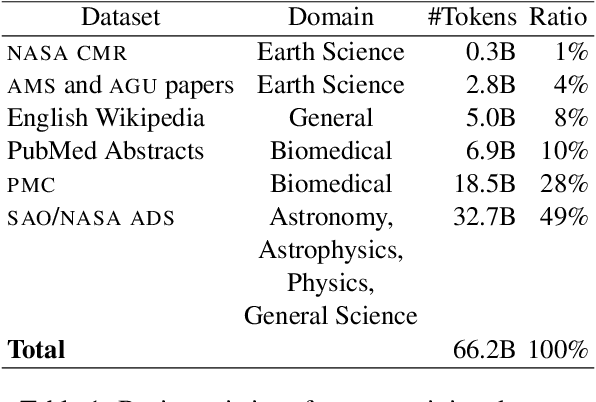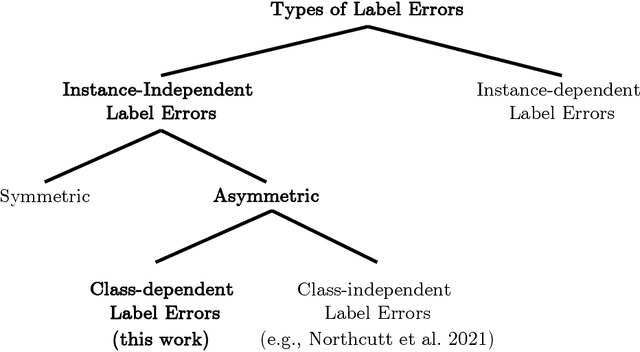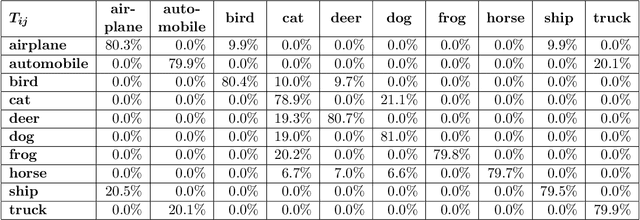Manil Maskey
Prithvi-EO-2.0: A Versatile Multi-Temporal Foundation Model for Earth Observation Applications
Dec 03, 2024Abstract:This technical report presents Prithvi-EO-2.0, a new geospatial foundation model that offers significant improvements over its predecessor, Prithvi-EO-1.0. Trained on 4.2M global time series samples from NASA's Harmonized Landsat and Sentinel-2 data archive at 30m resolution, the new 300M and 600M parameter models incorporate temporal and location embeddings for enhanced performance across various geospatial tasks. Through extensive benchmarking with GEO-Bench, the 600M version outperforms the previous Prithvi-EO model by 8\% across a range of tasks. It also outperforms six other geospatial foundation models when benchmarked on remote sensing tasks from different domains and resolutions (i.e. from 0.1m to 15m). The results demonstrate the versatility of the model in both classical earth observation and high-resolution applications. Early involvement of end-users and subject matter experts (SMEs) are among the key factors that contributed to the project's success. In particular, SME involvement allowed for constant feedback on model and dataset design, as well as successful customization for diverse SME-led applications in disaster response, land use and crop mapping, and ecosystem dynamics monitoring. Prithvi-EO-2.0 is available on Hugging Face and IBM terratorch, with additional resources on GitHub. The project exemplifies the Trusted Open Science approach embraced by all involved organizations.
WxC-Bench: A Novel Dataset for Weather and Climate Downstream Tasks
Dec 03, 2024



Abstract:High-quality machine learning (ML)-ready datasets play a foundational role in developing new artificial intelligence (AI) models or fine-tuning existing models for scientific applications such as weather and climate analysis. Unfortunately, despite the growing development of new deep learning models for weather and climate, there is a scarcity of curated, pre-processed machine learning (ML)-ready datasets. Curating such high-quality datasets for developing new models is challenging particularly because the modality of the input data varies significantly for different downstream tasks addressing different atmospheric scales (spatial and temporal). Here we introduce WxC-Bench (Weather and Climate Bench), a multi-modal dataset designed to support the development of generalizable AI models for downstream use-cases in weather and climate research. WxC-Bench is designed as a dataset of datasets for developing ML-models for a complex weather and climate system, addressing selected downstream tasks as machine learning phenomenon. WxC-Bench encompasses several atmospheric processes from meso-$\beta$ (20 - 200 km) scale to synoptic scales (2500 km), such as aviation turbulence, hurricane intensity and track monitoring, weather analog search, gravity wave parameterization, and natural language report generation. We provide a comprehensive description of the dataset and also present a technical validation for baseline analysis. The dataset and code to prepare the ML-ready data have been made publicly available on Hugging Face -- https://huggingface.co/datasets/nasa-impact/WxC-Bench
Challenges in Guardrailing Large Language Models for Science
Nov 12, 2024Abstract:The rapid development in large language models (LLMs) has transformed the landscape of natural language processing and understanding (NLP/NLU), offering significant benefits across various domains. However, when applied to scientific research, these powerful models exhibit critical failure modes related to scientific integrity and trustworthiness. Existing general-purpose LLM guardrails are insufficient to address these unique challenges in the scientific domain. We provide comprehensive guidelines for deploying LLM guardrails in the scientific domain. We identify specific challenges -- including time sensitivity, knowledge contextualization, conflict resolution, and intellectual property concerns -- and propose a guideline framework for the guardrails that can align with scientific needs. These guardrail dimensions include trustworthiness, ethics & bias, safety, and legal aspects. We also outline in detail the implementation strategies that employ white-box, black-box, and gray-box methodologies that can be enforced within scientific contexts.
Machine Learning Global Simulation of Nonlocal Gravity Wave Propagation
Jun 20, 2024Abstract:Global climate models typically operate at a grid resolution of hundreds of kilometers and fail to resolve atmospheric mesoscale processes, e.g., clouds, precipitation, and gravity waves (GWs). Model representation of these processes and their sources is essential to the global circulation and planetary energy budget, but subgrid scale contributions from these processes are often only approximately represented in models using parameterizations. These parameterizations are subject to approximations and idealizations, which limit their capability and accuracy. The most drastic of these approximations is the "single-column approximation" which completely neglects the horizontal evolution of these processes, resulting in key biases in current climate models. With a focus on atmospheric GWs, we present the first-ever global simulation of atmospheric GW fluxes using machine learning (ML) models trained on the WINDSET dataset to emulate global GW emulation in the atmosphere, as an alternative to traditional single-column parameterizations. Using an Attention U-Net-based architecture trained on globally resolved GW momentum fluxes, we illustrate the importance and effectiveness of global nonlocality, when simulating GWs using data-driven schemes.
INDUS: Effective and Efficient Language Models for Scientific Applications
May 17, 2024



Abstract:Large language models (LLMs) trained on general domain corpora showed remarkable results on natural language processing (NLP) tasks. However, previous research demonstrated LLMs trained using domain-focused corpora perform better on specialized tasks. Inspired by this pivotal insight, we developed INDUS, a comprehensive suite of LLMs tailored for the Earth science, biology, physics, heliophysics, planetary sciences and astrophysics domains and trained using curated scientific corpora drawn from diverse data sources. The suite of models include: (1) an encoder model trained using domain-specific vocabulary and corpora to address natural language understanding tasks, (2) a contrastive-learning-based general text embedding model trained using a diverse set of datasets drawn from multiple sources to address information retrieval tasks and (3) smaller versions of these models created using knowledge distillation techniques to address applications which have latency or resource constraints. We also created three new scientific benchmark datasets namely, CLIMATE-CHANGE-NER (entity-recognition), NASA-QA (extractive QA) and NASA-IR (IR) to accelerate research in these multi-disciplinary fields. Finally, we show that our models outperform both general-purpose encoders (RoBERTa) and existing domain-specific encoders (SciBERT) on these new tasks as well as existing benchmark tasks in the domains of interest.
Improving Label Error Detection and Elimination with Uncertainty Quantification
May 15, 2024



Abstract:Identifying and handling label errors can significantly enhance the accuracy of supervised machine learning models. Recent approaches for identifying label errors demonstrate that a low self-confidence of models with respect to a certain label represents a good indicator of an erroneous label. However, latest work has built on softmax probabilities to measure self-confidence. In this paper, we argue that -- as softmax probabilities do not reflect a model's predictive uncertainty accurately -- label error detection requires more sophisticated measures of model uncertainty. Therefore, we develop a range of novel, model-agnostic algorithms for Uncertainty Quantification-Based Label Error Detection (UQ-LED), which combine the techniques of confident learning (CL), Monte Carlo Dropout (MCD), model uncertainty measures (e.g., entropy), and ensemble learning to enhance label error detection. We comprehensively evaluate our algorithms on four image classification benchmark datasets in two stages. In the first stage, we demonstrate that our UQ-LED algorithms outperform state-of-the-art confident learning in identifying label errors. In the second stage, we show that removing all identified errors from the training data based on our approach results in higher accuracies than training on all available labeled data. Importantly, besides our contributions to the detection of label errors, we particularly propose a novel approach to generate realistic, class-dependent label errors synthetically. Overall, our study demonstrates that selectively cleaning datasets with UQ-LED algorithms leads to more accurate classifications than using larger, noisier datasets.
Croissant: A Metadata Format for ML-Ready Datasets
Mar 28, 2024Abstract:Data is a critical resource for Machine Learning (ML), yet working with data remains a key friction point. This paper introduces Croissant, a metadata format for datasets that simplifies how data is used by ML tools and frameworks. Croissant makes datasets more discoverable, portable and interoperable, thereby addressing significant challenges in ML data management and responsible AI. Croissant is already supported by several popular dataset repositories, spanning hundreds of thousands of datasets, ready to be loaded into the most popular ML frameworks.
DMLR: Data-centric Machine Learning Research -- Past, Present and Future
Nov 21, 2023


Abstract:Drawing from discussions at the inaugural DMLR workshop at ICML 2023 and meetings prior, in this report we outline the relevance of community engagement and infrastructure development for the creation of next-generation public datasets that will advance machine learning science. We chart a path forward as a collective effort to sustain the creation and maintenance of these datasets and methods towards positive scientific, societal and business impact.
Leveraging Citizen Science for Flood Extent Detection using Machine Learning Benchmark Dataset
Nov 15, 2023



Abstract:Accurate detection of inundated water extents during flooding events is crucial in emergency response decisions and aids in recovery efforts. Satellite Remote Sensing data provides a global framework for detecting flooding extents. Specifically, Sentinel-1 C-Band Synthetic Aperture Radar (SAR) imagery has proven to be useful in detecting water bodies due to low backscatter of water features in both co-polarized and cross-polarized SAR imagery. However, increased backscatter can be observed in certain flooded regions such as presence of infrastructure and trees - rendering simple methods such as pixel intensity thresholding and time-series differencing inadequate. Machine Learning techniques has been leveraged to precisely capture flood extents in flooded areas with bumps in backscatter but needs high amounts of labelled data to work desirably. Hence, we created a labeled known water body extent and flooded area extents during known flooding events covering about 36,000 sq. kilometers of regions within mainland U.S and Bangladesh. Further, We also leveraged citizen science by open-sourcing the dataset and hosting an open competition based on the dataset to rapidly prototype flood extent detection using community generated models. In this paper we present the information about the dataset, the data processing pipeline, a baseline model and the details about the competition, along with discussion on winning approaches. We believe the dataset adds to already existing datasets based on Sentinel-1C SAR data and leads to more robust modeling of flood extents. We also hope the results from the competition pushes the research in flood extent detection further.
Foundation Models for Generalist Geospatial Artificial Intelligence
Nov 08, 2023Abstract:Significant progress in the development of highly adaptable and reusable Artificial Intelligence (AI) models is expected to have a significant impact on Earth science and remote sensing. Foundation models are pre-trained on large unlabeled datasets through self-supervision, and then fine-tuned for various downstream tasks with small labeled datasets. This paper introduces a first-of-a-kind framework for the efficient pre-training and fine-tuning of foundational models on extensive geospatial data. We have utilized this framework to create Prithvi, a transformer-based geospatial foundational model pre-trained on more than 1TB of multispectral satellite imagery from the Harmonized Landsat-Sentinel 2 (HLS) dataset. Our study demonstrates the efficacy of our framework in successfully fine-tuning Prithvi to a range of Earth observation tasks that have not been tackled by previous work on foundation models involving multi-temporal cloud gap imputation, flood mapping, wildfire scar segmentation, and multi-temporal crop segmentation. Our experiments show that the pre-trained model accelerates the fine-tuning process compared to leveraging randomly initialized weights. In addition, pre-trained Prithvi compares well against the state-of-the-art, e.g., outperforming a conditional GAN model in multi-temporal cloud imputation by up to 5pp (or 5.7%) in the structural similarity index. Finally, due to the limited availability of labeled data in the field of Earth observation, we gradually reduce the quantity of available labeled data for refining the model to evaluate data efficiency and demonstrate that data can be decreased significantly without affecting the model's accuracy. The pre-trained 100 million parameter model and corresponding fine-tuning workflows have been released publicly as open source contributions to the global Earth sciences community through Hugging Face.
 Add to Chrome
Add to Chrome Add to Firefox
Add to Firefox Add to Edge
Add to Edge